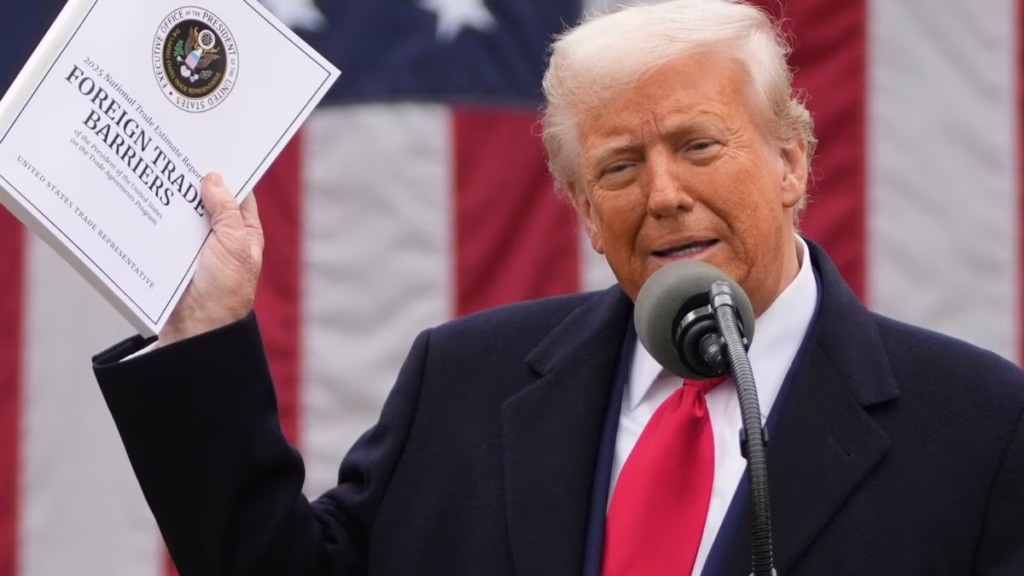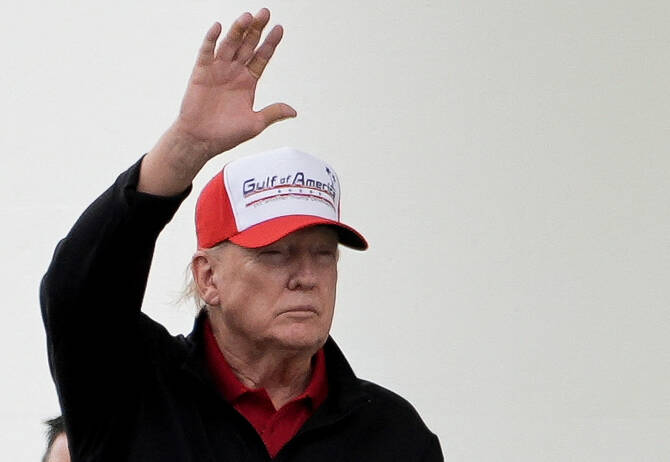Trump tariffs are once again reshaping global trade patterns, and their ripple effects are being felt strongly in the Gulf and Asia. As Washington imposes fresh duties on imports, many countries are recalibrating their partnerships, redirecting trade flows, and building new alliances. For Gulf countries that sit at the heart of global energy markets and trade routes, this shift offers both opportunities and challenges. Increasingly, the result has been closer ties with Asian nations, who themselves are looking to hedge against trade tensions with the United States.
This development is more than just about economics. It represents a broader geopolitical and financial realignment in a world where old alliances are being tested and new partnerships are being forged.
The following analysis explores how Trump tariffs are reshaping trade, why Gulf states are looking eastward, and what this means for the global economy in 2025.
Trump tariffs and the changing global order
Trade wars have become a recurring theme in global politics. The Trump administration’s tariffs, designed to protect American industries and reduce reliance on foreign goods, have triggered countermeasures from major economies. But while these tariffs may benefit some U.S. sectors, they also create disruptions across supply chains that stretch from Asia to the Middle East.
For Gulf countries, whose economies depend heavily on global trade, energy exports, and foreign investment, the tariffs are a reminder that economic diversification is no longer optional but necessary. Gulf leaders are now deepening their partnerships with Asia to secure alternative trade pathways and reduce exposure to Western market volatility.
Gulf and Asian countries: strengthening trade links
The Gulf has long been a crucial energy supplier to Asia, especially China, India, Japan, and South Korea. But Trump tariffs have accelerated this relationship into new areas such as technology, infrastructure, and renewable energy.
For example:
- Saudi Arabia is ramping up investment partnerships with China’s Belt and Road Initiative.
- The United Arab Emirates (UAE) is positioning itself as a logistics hub for Asian goods rerouted due to U.S. tariffs.
- Qatar is expanding LNG supply contracts with India and other Asian buyers.
This is not just about energy. Gulf sovereign wealth funds, some of the largest in the world, are directing more capital toward Asian markets, betting on long-term growth while hedging against Western uncertainty.
The role of Trump tariffs in Gulf diversification
One of the biggest drivers of Gulf economic policy is diversification away from oil. Trump tariffs, by disrupting old trade norms, are reinforcing this shift. When U.S. markets become less predictable, Gulf states look to Asia as a partner in building industries of the future.
In practice, this means:
- Investments in renewable energy projects with Asian companies.
- Collaboration in fintech and digital banking to serve cross-border commerce.
- Expanding tourism links, as Asian travelers are seen as vital to Gulf tourism goals.
These partnerships go hand in hand with the ambitious economic visions of Gulf nations, such as Saudi Arabia’s Vision 2030 and the UAE’s Centennial 2071 strategy.

Geopolitics and Trump tariffs
The politics of Trump tariffs go far beyond economics. They reflect a growing fragmentation of global alliances. Gulf nations, traditionally close to the West, now see Asia as a necessary counterbalance. China and India, in particular, are emerging as vital strategic partners.
At the same time, Trump tariffs are prompting Asian nations to diversify their energy and trade partnerships. This mutual interest is driving stronger Gulf-Asia ties, both bilaterally and through regional organizations.
Key Gulf-Asia trade developments in 2025
Several new developments highlight how Trump tariffs are boosting Gulf-Asia connections:
- Record energy contracts signed between Gulf states and Asian economies, bypassing Western intermediaries.
- Asian investments in Gulf free zones and special economic zones, particularly in logistics and high-tech industries.
- Growing cooperation on infrastructure projects, linking Gulf ports with Asian shipping lanes.
- Shared investments in artificial intelligence, cybersecurity, and green technology.
Each of these developments underscores a deeper trend: the Gulf is no longer simply an energy supplier to Asia, but a full economic partner.
Challenges ahead for Gulf and Asia
While Trump tariffs may encourage closer Gulf-Asia ties, challenges remain. Competing interests between Gulf exporters and Asian importers can sometimes create friction. Additionally, the global economy is still highly interdependent, meaning that trade tensions in one region can affect others.
Another issue is political alignment. The Gulf has historically been tied to U.S. security guarantees, while Asia is navigating its own complex ties with Washington. Balancing these dynamics requires careful diplomacy.
The future of Gulf-Asia partnerships
Despite challenges, the trajectory is clear: Gulf-Asia ties will continue to deepen as long as Trump tariffs and similar protectionist measures remain in place. Even if tariffs ease in the future, the trust and infrastructure being built today will ensure that the Gulf-Asia connection endures.
In the long run, this could shift the global center of trade and influence further eastward, with the Gulf acting as a critical bridge between Asia, Africa, and Europe.
Conclusion
Trump tariffs are more than just an economic tool; they are reshaping the global order. For Gulf countries, they provide both a challenge and an opportunity. By strengthening ties with Asia, the Gulf is not only securing its economic future but also positioning itself as a key player in a multipolar world.
As 2025 unfolds, one thing is certain: Trump tariffs are accelerating the rise of new trade routes and partnerships, with the Gulf and Asia at the center of this transformation.
Read More: Aarefa Al Falahi: The Woman Redefining Banking Leadership



